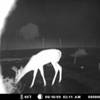Abstract
Wildflowers Susceptible to Deer Damage in North Florida (WEC315/UW360)
One sure way to prevent deer damage to your landscape is to choose plants that deer do not like to eat. Unfortunately, deer foraging preferences vary geographically and studies conducted with captive deer aren’t always accurate. So UF/IFAS wildlife researchers investigated the foraging preference of wild white-tailed deer at two sites in Gadsden County with high deer densities for two years. Of 11 wildflowers tested, four were very susceptible to browsing: fringeleaf tickseed, Florida tickseed, coastalplain tickseed, and orange coneflower. This 4-page fact sheet was written by Holly K. Ober, Lucas W. DeGroote, James H. Aldrich, Jefferey G. Norcini, and Gary W. Knox, and published by the UF Department of Wildlife Ecology and Conservation, December 2011.
The documents contained on this website are copyrighted by the University of Florida, Institute of Food and Agricultural Sciences (UF/IFAS) for the people of the State of Florida. UF/IFAS retains all rights under all conventions, but permits free reproduction by all agents and offices of the Cooperative Extension Service and the people of the State of Florida. Permission is granted to others to use these materials in part or in full for educational purposes, provided that full credit is given to the UF/IFAS, citing the publication, its source, and date of publication.

